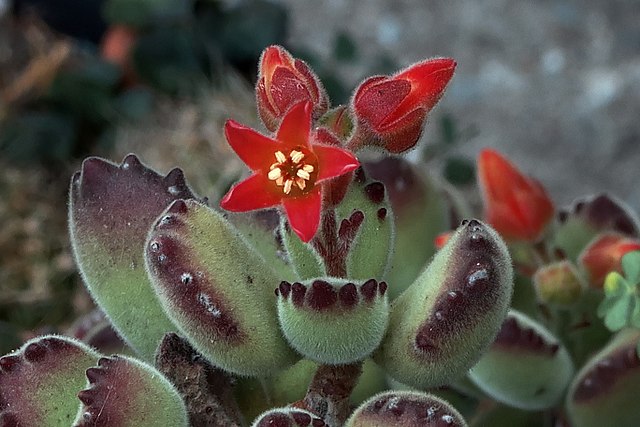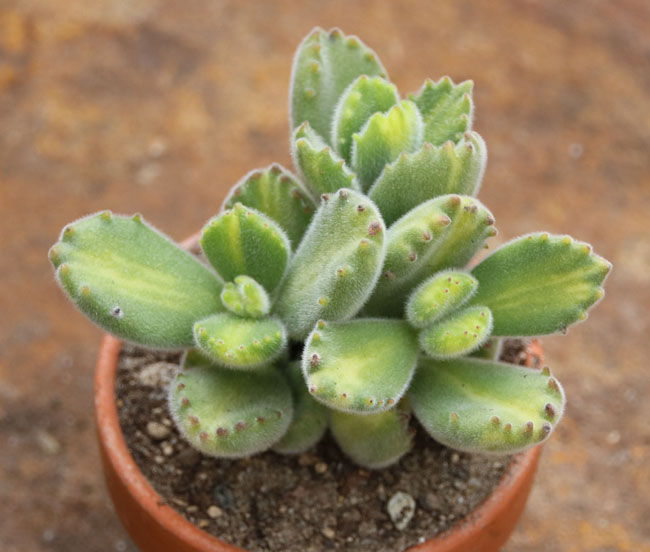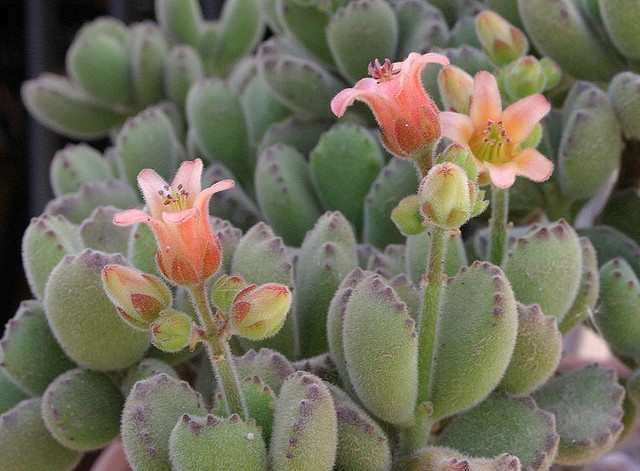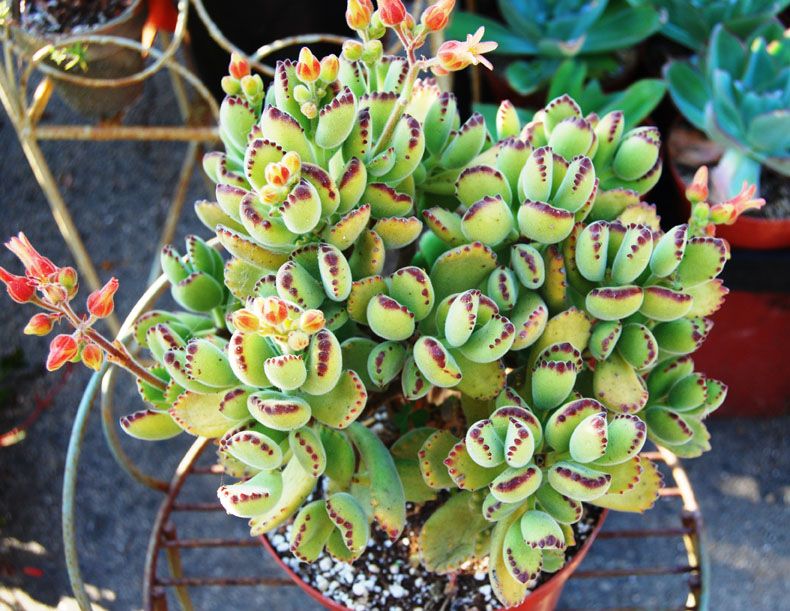Table of Contents
I. Introduction
The Bear Paw Succulent is a fascinating plant, known for its unique appearance and resistance. In this guide, we’ll explore the steps for making seedlings of this very special plant.
The Bear Paw Succulent, also known by its scientific name Cotyledon tomentosa, is a succulent native to South Africa. Its name comes from the fleshy, hairy leaves that resemble the paws of a bear. This plant has gained popularity due to its easy maintenance and exotic beauty.
Learning how to grow Bear Paw Succulents is essential for gardening enthusiasts and succulent lovers. As well as allowing you to expand your garden, making cuttings is a sustainable way of propagating this plant, reducing the need to buy new cuttings.

II. Understanding the Bear Paw Succulent
A. Description of the plant
The Bear Paw Succulent is a unique-looking plant with fleshy, hairy leaves that resemble a bear’s paws, hence its name. Its leaves are dark green and grow in compact rosettes, giving it an exotic and attractive look.
B. Ideal growing conditions
For healthy growth, the Bear Paw Succulent needs full to partial sun and well-drained soil. It is drought-resistant and prefers moderate watering. It is important to protect it from frost and extreme temperatures, especially in winter.
C. Why make seedlings?
Making seedlings of the Bear Paw Succulent is an effective way of expanding your garden without the need to buy new plants. In addition, propagating your own seedlings allows you to control the quality and health of the new plants, ensuring a more robust and satisfying harvest.
III. Preparation
A. Materials needed
- Sterilized pruning shears
- Small containers for seedlings
- Substrate for succulents
- Sand or perlite to improve drainage
- Water sprayer
- Propagation tray or shallow dish
B. Preparing the propagation environment
Before starting the propagation process, make sure you have a place that is well lit but protected from direct sunlight. Prepare the seedling containers by filling them with the appropriate substrate and adding a layer of sand or perlite on top to improve drainage. Keep the environment moist, but not soggy, using a water sprayer to water the seedlings as necessary.

IV. Five Tips for Growing Bear Paw Succulents
Tip 1: Choosing the leaves
- When selecting leaves for Bear Paw succulent seedlings, it’s important to choose those that are healthy and mature. Mature leaves are more likely to develop strong roots, resulting in more vigorous and healthy seedlings.
Tip 2: Preparing the leaves
- After picking the leaves, allow them to dry in a shaded place for a few days. This drying process helps the cut wound to heal, reducing the risk of infection during the rooting process. Make sure the leaves are completely dry before proceeding to the next step.
Tip 3: Planting the leaves
- When planting the leaves to make cuttings, it is crucial to bury them shallowly in well-drained soil. Avoid burying them too deeply, as this can hinder root development. Place the leaves so that they are in contact with the soil, but don’t press them down too firmly.
Tip 4: Care during the rooting process
- During the rooting process, it is essential to give the leaves proper care. Keep them in a place with indirect light and water them moderately. Avoid overwatering, as this can lead to leaf rot. Monitor them regularly to ensure that the soil is slightly damp, but never soggy.
Tip 5: Transplant the rooted cuttings
- Once the cuttings have developed roots, it’s time to transplant them into individual pots with soil suitable for succulents. When transplanting, handle the cuttings carefully to avoid damaging the growing roots. Keep the soil slightly moist over the following weeks and gradually increase exposure to direct sunlight to strengthen the young plants. Monitor the growth of the seedlings and adjust care as necessary to ensure healthy development.

V. Post-Propagation Care
A. Proper watering
Water the seedlings only when the soil is dry. Avoid overwatering, as succulents are sensitive to root rot.
B. Sunlight and temperature
Place the seedlings in a spot with indirect or filtered sunlight. Avoid direct exposure to strong sunlight, especially during the hottest hours of the day. Keep the seedlings at moderate temperatures, avoiding extremes of heat or cold.
C. Fertilization
The Bear Paw Succulent does not require frequent fertilization. Use a diluted fertilizer specifically for succulents only during the growing season, following the manufacturer’s instructions.
VI. Common problems and solutions
A. Problems during rooting
If the leaves are not developing roots after a few weeks, check that the propagation environment is moist enough and that the leaves are receiving adequate indirect light. If necessary, try switching to a lighter, more airy substrate to promote rooting.
B. Problems after transplanting
If the rooted cuttings show signs of root rot or wilt after transplanting, check that the soil is too wet and that there is good drainage. Remove the cuttings from the damp soil and let them dry out for a short time before replanting them in dry, well-drained soil.

VII. Conclusion
When making Bear Paw Succulent cuttings, remember to choose healthy leaves, prepare them properly, plant them correctly, take care of the rooting process and transplant the rooted cuttings carefully.
Frequently Asked Questions
How do I grow a succulent from a stem?
To propagate a succulent from the stem, start by selecting a healthy stem and cutting off a segment of about 5 to 10 centimeters. Let the cutting dry for a few days to form a dry bark on the cut end, which helps prevent infection. Once dry, plant the stem in well-drained soil, burying about a third of the segment. Keep the soil slightly moist and in suitable light conditions to encourage rooting.
How to plant a bear paw succulent?
To plant the Bear Paw succulent, choose a pot with soil suitable for succulents that is well-drained. Carefully remove the plant from the original pot, preserving its roots. Dig a hole in the new pot and place the plant in it, covering its roots with fresh soil. Gently press the soil around the base of the plant to firm it up. Water it moderately and place it in a spot with indirect light.
How do I grow a succulent from a branch?
To propagate a succulent from a branch, choose a healthy branch and cut it into segments 5 to 10 centimeters long. Let the cuttings dry for a few days to form a dry bark at the cut ends. After drying, plant the branch segments in well-drained soil, burying one part in the ground. Keep the soil slightly damp and provide indirect light while waiting for rooting.







